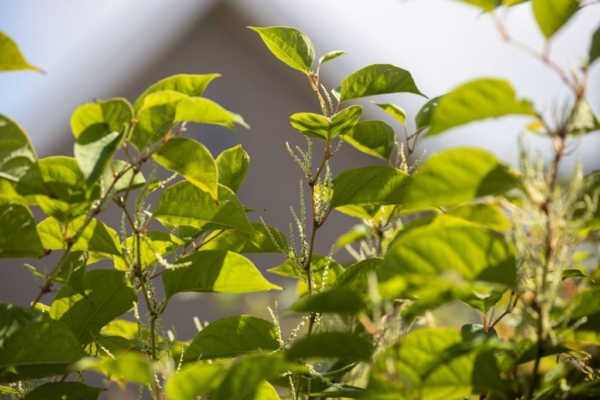Japan’s cherry blossoms are a symbol of the friendship between Japan and the United States, but not every Japanese plant is welcomed by Americans. The Japanese knotweed, introduced into the United States in the 19th century, is a shrub-like plant that, despite its stunning summer flowers, hides destructive traits beneath its beautiful appearance, causing headaches for American homeowners.
Also known as false bamboo or Japanese knotweed, this invasive non-native plant species has taken root and spread, posing a threat to meticulously manicured yards and even house foundations in the Midwest, Northwest, and Northeast regions of the United States.
According to The Wall Street Journal, Japanese knotweed resembles dense bamboo and boasts beautiful white flowers that bloom at the end of summer. This plant thrives without much care and grows rapidly.
Its stems can grow up to 3 feet per week, while its underground rhizomes can expand several feet each growing season (from spring to early autumn). Japanese knotweed tends to outcompete native plants in its desired territory. This resilient plant, nearly impervious to natural predators, has strong penetrating roots that make eradication nearly impossible. Just when you think you’ve gotten rid of it, it suddenly reappears in cracks in concrete or asphalt, using its robust roots to widen the cracks and eventually cause damage to buildings like houses, roads, and dams.
Robert Naczi, director of the North American Plant Herbarium at the New York Botanical Garden, emphasized to The Wall Street Journal the need to completely dig out these plants from the soil or use herbicides. However, both methods are challenging and typically take at least three years to prevent regrowth, as even a small piece of root can sprout.
Naczi stressed the importance of handling this plant with great care, warning that it can take root and sprout anywhere like a salesperson. “You have to take this plant seriously,” Naczi said.
A few years ago, a court in the UK ruled that Japanese knotweed is a “harmful plant” and a “natural hazard plant,” mandating landowners to control it; homeowners can sue neighbors for compensation if the plant invades. It is illegal for homeowners to conceal the presence of Japanese knotweed in the garden when selling a property.
In the UK, residents who discover Japanese knotweed on their land are advised to purchase knotweed insurance, a policy lasting 5 to 10 years that requires annual eradication payments, with limited success in controlling the plant. Even with insurance, once affected by Japanese knotweed, it can negatively impact property values.
The Daily Mail reported that people are now concerned that this plant could significantly devalue American homes.
A couple from Maine detailed to The Wall Street Journal their efforts to remove Japanese knotweed from their new home after moving in, but even years later, the plant has not disappeared.
The Wall Street Journal listed several methods to suppress or completely kill Japanese knotweed, including regular pruning or excavation of the roots (which takes several years), cutting it down and spraying herbicides when the plant blooms, and hiring pesticide experts. Researchers have also found a special insect – Aphalara itadori – that feeds on Japanese knotweed, but its effectiveness remains uncertain.

